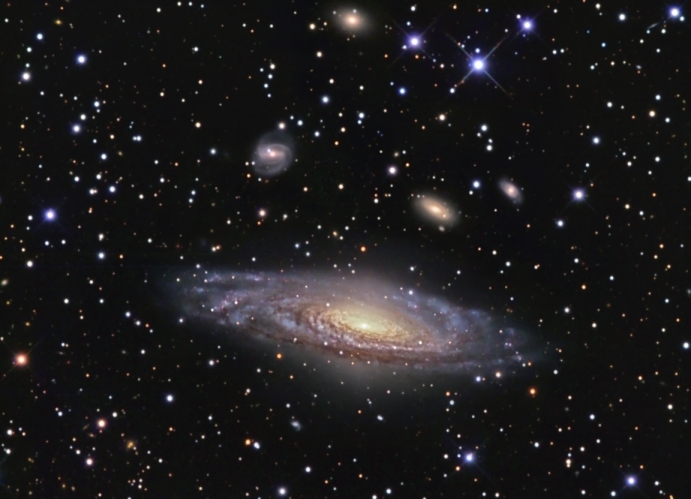I was watching many of the videos at Beyond Belief yesterday evening. They are well worth your time, particularly if you want to understand the historical narratives of science and religion. When Carolyn Porco was talking (video, last speaker) about wonder and showing some of the stunning astronomical images, I was struck by a thought. It is this: Whenever I see some beautiful astronomical images, I cannot get over the fact that they are real. Consider the image below. Each of these little swirly things are galaxies with millions of stars. How puny our imaginations and preposterous fictional accounts seem to be when compared to this!
More like this
"Let us leave this place where the smoke blows black
And the dark street winds and bends.
Past the pits where the asphalt flowers grow
We shall walk with a walk that is measured and slow,
And watch where the chalk-white arrows go
From Earth to the Universe was a brilliant outreach project for the 2009 International Year of Astronomy, displaying online, and in real life, some of the best astronomical images around.
A few years ago I needed to image some ants for a short taxonomic paper. Lacking a decent specimen imaging system (like Entovision), I decided to snap the photos at
"Don't go around saying the world owes you a living. The world owes you nothing. It was here first." -Mark Twain

Hmmm, when I see beautiful astronomy images, I have to wonder about how real they are. Colorization is quite common in the field today. In many cases this is essential, because some scopes "see" in infrared, ultraviolet, or even X-rays, and so must be substituted with visible colors when rendered. In serious scientific forums the colorization scheme for any image will be reported, but when these images make it to more mainstream outlets, that information is frequently omitted.